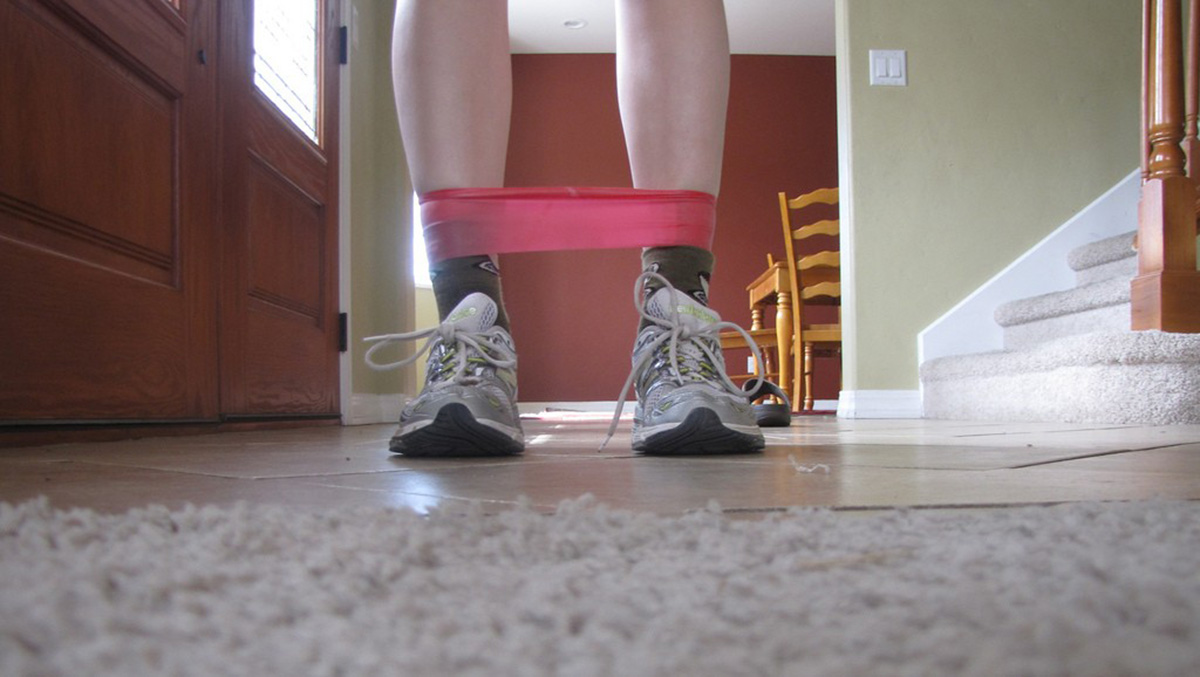Table of Contents
Muscular weakness is involved, don't get me wrong, and so is excessive movement. But the real cause of most ankle injuries is the injured person's inability to control the ankle. The majority of ankle injuries take place when landing or performing fast footwork type movements - when the ankle has to resist force, often in more than one plane, and has to change the direction of force quickly.

Most rehab programs for the ankle focus on restricting the range of motion, on the basis that too great a range of motion led to injury - but the injury wasn't caused by too great a range of motion, but by too great a range of uncontrolled motion. Immobilizing the ankle with straps, casts, boots and other hardware doesn't reduce range of motion permanently - when the boot comes off, your ankle can still be moved. But it does reduce active, controlled range of motion - exactly what was lacking in the first place.
Then they'll focus on building strength in the muscles around the ankle. Again, there's nothing wrong with making the ankle supporting muscles stronger - but doing band-resisted eversions or other highly specific strengthening exercises to target small muscles that most of us can't even find neurologically and which we often lack the capacity to voluntarily contract isn't the best way to do this.
So what should we be doing?
The key is to focus on function. We should be restoring range of motion as soon as possible, and gradually working to improve the mechanoreception of the whole joint complex. We need to recover the use of the ankle, and that's done by building active, controlled range of motion, then building strength on top of that.
Shoulder rehab
Shoulders are another common problem area, in particular, damage to the supraspinatus, a tendonous muscle that runs over the top of the shoulder and forms part of the rotator cuff. It used to be thought that supraspinatus' job was to abduct the arm for the first few degrees of movement, but it's now known that the deltoid can do this all by iself; supraspinatus is a synergist whose prime purpose is to pull the head of the humerus into the right position relative to the deltoid. This might seem a bit abstract, but it becomes important later.
The story you'll most often hear from personal trainers and sports/fitness professionals is one of thoracic kyphosis, shoulder overextension and chronically weak, underactive scapular retractors.
The standard story is that you need to learn to retract your scapulae and thus pull yourself upright.
But what really happens when you do this?
You'll be retracting your shoulder blades and depressing them - even though chronic scapular depression is part of the problem. Try hard enough and you'll be able to create hyperextension at the transition between your lumbar and thoracic spine. That's how you make yourself 'pigeon-chested' - and it's how you learn to compensate for poor shoulder mobility by deforming your spine. Exercises like YWLTs, where you stand with your arms out by your sides and 'pinch' your shoulderblades together, have some use for some people, but because they're simple they're the go-to for any shoulder dysfunction, and they shouldn't be. In a lot of cases, people are doing these exercises to reduce the pain and discomfort of a shoulder injury or to prevent one - and they're getting one. If you do your prehab before you train, you're actually preparing your body to perform bad movement patters before you load it, then loading those patterns. So it's no surprise when things go wrong.
See Also: Rehabilitation Tips and Exercises for Ankle Sprain
What should we do instead?
Work to have conscious control over where your scapula is. Learn to foam roll or use some other soft tissue or myofascial release method and use it on your shoulders - especially the gap between your shoulder and your upper arm, where you teres major sits. This muscle attaches the shoulder blade to the upper arm, so if you have trouble disassociating the arm from the scapula a tight teres muscle could be why. Try to keep your shoulder blade slightly elevated and the bottom corner slightly forward - the opposite effect of the scapular retraction exercises we're told will fix our shoulders. Meanwhile, to fix kyphosis, learn to use your spinal erectors to pull your spine erect: hat way you won't isolate certain parts of it and set yourself up for an injury!
If you like what you've read here, or you think it needs correcting, or if you have hava a story to share, get in touch through the comments section below!
- Photo by shutterstock.com
- Photo courtesy of Karah Levely-Rinaldi by Flickr : www.flickr.com/photos/kazzpoint0/5616957312


Your thoughts on this